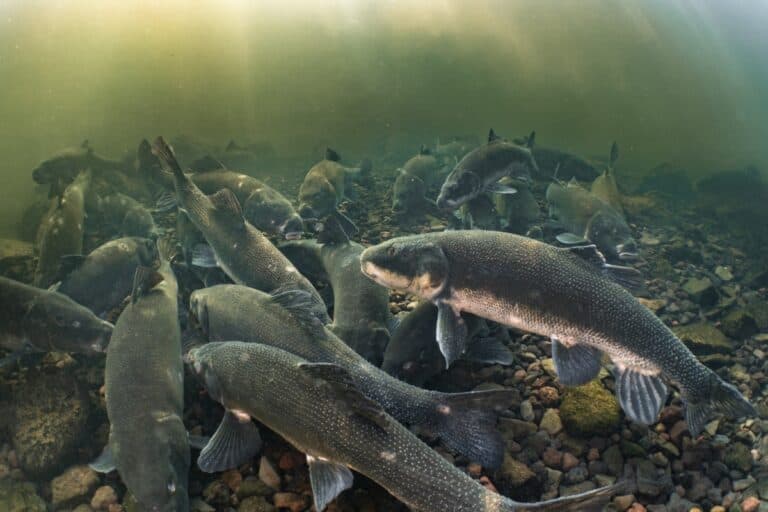Over 140 projects identified to revitalize functional ecosystems and support multiple native fish species
Shortnose suckers (Koptu) are an imperiled species found in the Klamath Basin, and nowhere else in the world. Photo courtesy of Jason Ching/University of Washington.
After seven years of robust discussion and collaboration, the U.S. Fish and Wildlife Service finalized the Klamath Basin Integrated Fisheries Restoration and Monitoring Plan, which will serve as a living roadmap describing the highest priority watershed restoration and monitoring actions to help reverse the declines of multiple native Klamath Basin fish populations and ecosystems and communities.
The Klamath Integrated Fish Plan will help guide and complement existing restoration efforts in the basin. The plan was developed in partnership with the Pacific States Marine Fisheries Commission and ESSA Technologies, with extensive input from over 100 participants from academic, government, Tribal and nongovernmental organizations.
“Impacts to native fish have been deeply felt by many who live, work and fish across the Klamath Basin,” said Service Regional Director Paul Souza. “This plan builds on existing conservation efforts in the basin and provides a unifying framework for coordinated restoration and recovery of native fish species from the headwaters to the Pacific Ocean, while improving flows, water quality, habitat and ecosystem processes to benefit local communities.”
Focal fish species include Chinook and coho salmon, steelhead, bull trout, redband […]
Full article: New restoration and monitoring plan will help imperiled fish in Klamath Basin

